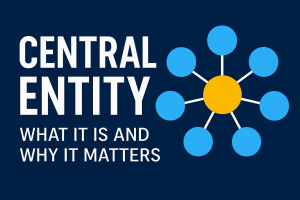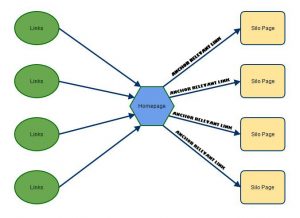Bounce rate is not a ranking factor for search engines.
There are two very simple and very logical reasons why Google and other search engines do not factor bounce rate into their ranking algorithm.
The first reason is just a matter of access. Google does not have access to bounce rate data on many of the webpages in existence. For some reason, many people seem to think of Google as this omnipotent power that sees and knows all. That is just not the case.
There are over 200 ranking signals in Google’s algorithm, all of which have different weightings.
When a search query is made, Google is pulling data from its index and comparing all of the websites it has indexed based on those 200 signals.
If Google were using bounce rate data, how would the algorithm compare a webpage where it has bounce rate data versus a webpage in which it has no bounce rate data? Which one is performing “better” for that ranking signal?
Still not convinced?
Fine.
Let’s look at the second reason that Google is not using bounce rate in its ranking algorithm.
Bounces are not always bad. They are not always a signal that there is something wrong with the page.
For some reason, many marketers have this stigma stuck in their head that all bounces are bad. They are not.
Let’s say you are running an emergency plumbing service and repair business. Someone in your community has a toilet that has suddenly started to overflow and they cannot fix it. They search for a local plumber in Google, see your page ranking first. They click the search result which brings them to the home page of your site. They like what they see and pick up the phone to call you (or your office) and see how fast you can help them out with their problem.
They never visited another page on your site. They will register as a bounce, but they did exactly what you wanted them to do and they found exactly what they needed, right? Your webpage converted them immediately into a phone call and a possible job.
That’s a good thing.
And why should Google see it differently or ding your site for that?
The same thing could be said if I am running an affiliate site. Usually an affiliate site is setup to drive traffic to a landing page and get them to click on an affiliate link. If they do not browse around on your site but click on the link, they are going to register as a bounce. Again, there is nothing wrong with that. They did exactly what you were hoping they would do.
We obviously do not have access to their analytics to prove it, but look at a site like Wikipedia. I would venture a guess that their bounce rate is quite high. People generally end up at Wikipedia because they were looking for an answer to a specific query and one of Wikipedia’s pages came up. They visit the page and find the answer they were looking for. Some might click on an internal link on the page if they see something that interests them. The vast majority most likely do not and simply leave.
Yet, Wikipedia ranks for everything.
Does That Mean Bounce Rate Data is Useless?
No. Not at all. Bounce rate data is useful for you. Not for search engines.
A high bounce rate could be indicative of a problem on a webpage. It really depends what type of website you are running and what it is you are trying to get visitors to do.
If you are running an ecommerce site where a particular page is bringing in a lot of traffic, but then the visitors are leaving without browsing other products, adding anything to their cart, etc., then there is likely something wrong with that page or the traffic coming to that page.
Even then, believe it or not, it may not be a bad thing. You always want to take a closer look. I’ve relayed this story before, but I will share it again here.
Before you go reworking a whole page or website, it is important to understand where the bounces are coming from. Who is bouncing, how did they find your site, and what pages are they bouncing from?
I was looking at a client’s website one time and noticed that the bounce rate across the site was 43%. Most of the pages fit around that number, but there was one page where the bounce rate was 89%. That was unusual. Average time on the site was over 6 minutes, but on this particular page it was under 30 seconds.
I took a closer look at the analytics, and found that search traffic was bouncing from that page at a much, much higher rate than traffic from other sources. Generally, if there is something wrong with the page, the bounce rate will be consistent among all sources of traffic. This was not the case.
Through some digging, we found that the page was not only ranking highly for our target keyword, but it was also ranking highly for another keyword that was similar but highly unrelated to the page. In other words, the words in the phrase were close, but the definitions were much different.
I cannot reveal the client’s site, but the difference in keyword phrases would be something like doggy style versus styles of dogs. The words are close, but have two completely different meanings.
The targeted phrase was searched about 500 times per month on average. The untargeted phrase was searched about 12,000 times per month. That’s why the percentage of bounces was so high.
In this situation, it was nothing to worry about. The bounces were coming from untargeted traffic.
This is a perfect example of why you really need to take a close look at what the bounces are actually telling you.



